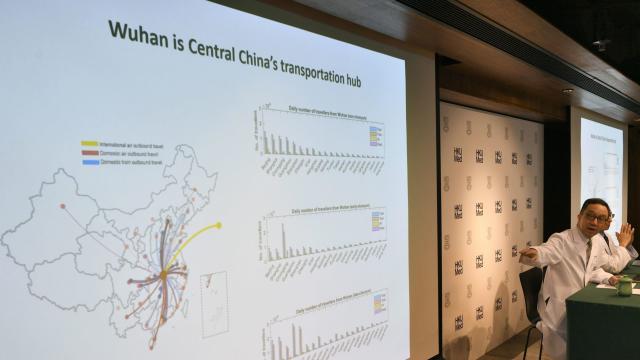What initially appeared to be an isolated, mild outbreak of a pneumonia-causing virus in China has quickly turned for the worse. On Tuesday, U.S. health officials confirmed the first case to have reached the country—a man who had recently travelled to the Wuhan region of China, where cases have been most common. It’s only the latest batch of bad news surrounding the new disease.
According to the Centres for the Disease Control and Prevention, the U.S. case is a man in his 30s who returned to Washington state from Wuhan on January 15. Soon after, he came down with symptoms of pneumonia (a catch-all term for lung infections) and sought medical care at a nearby hospital. Given the man’s travel history and symptoms, doctors quickly sent off samples to the CDC. On Monday, lab testing confirmed the virus in his system, a never-before-discovered species of coronavirus that’s been given the early name “2019-nCoV” (the n stands for novel).
[referenced url=” thumb=” title=” excerpt=”]
When cases of the new virus were first reported by doctors in China last December, the outbreak appeared to be limited to people who had visited a particular food market in Wuhan, where they had likely caught it from an unknown animal. There was hope initially that the disease wasn’t capable of spreading from person to person, as well as that it wasn’t especially virulent. But as the genetic identity of the virus was uncovered and new testing was created to detect it in people, those hopes were dashed.
Currently, there are nearly 300 confirmed cases of 2019-nCoV in China, including among health care workers, along with six confirmed deaths. On Monday, Chinese health officials also confirmed that the virus can and has spread from person to person.
But even the current reported situation in China might be an underestimate. An analysis conducted by researchers in the UK last week speculated that there may be as many as 1,700 cases in Wuhan already. Though the fatality rate of 2019-nCoV doesn’t seem to be as high as the SARS or MERS virus—two other recently discovered coronaviruses that killed between 15 per cent to 30 per cent of victims during their initial outbreaks—it’s still too early to know for sure.
The man involved in the U.S. case is currently in good condition, CDC officials said Tuesday, though he remains in isolated medical care. Japan, South Korea, Taiwan, and Thailand have also reported cases of 2019-nCoV. So far, all reported non-China cases have been traced back to people who recently visited Wuhan. But not all cases overall have been linked to the food market in Wuhan. That’s potentially very bad news, because it could mean the outbreak has splintered off into new chains of transmission and that any hopes of containing it in the immediate future are already doomed.
On Monday, Chinese health experts raised fears that the outbreak will get worse as the Chinese New Year kicks off a weeks-long festival season. On Tuesday, the Western Pacific branch of the World Health Organisation stated that it was worried about “sustained” person-to-person transmission of the virus, based on the information available.
The worsening situation has prompted the World Health Organisation to schedule an impromptu meeting over 2019-nCoV on Wednesday. There, they may very well declare the outbreak an international public health emergency.
Though the CDC has stated that the danger to the U.S. is currently low, it has already given the go-ahead to preemptive screening of passengers from Wuhan travelling through three high-traffic airports in California and New York: the San Francisco International Airport, Los Angeles International Airport, and John F. Kennedy International Airport. On Tuesday, the agency expanded the screenings to Atlanta’s Hartsfield-Jackson International and Chicago’s O’Hare International Airport.
